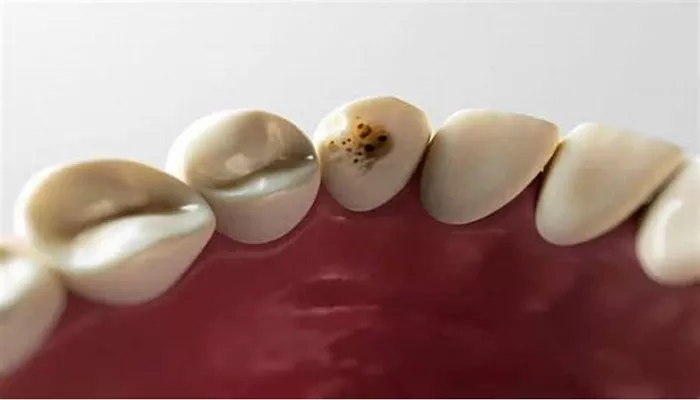Cavities, also known as dental caries, are one of the most common dental problems affecting people of all ages. They occur when the hard surface of a tooth is damaged due to decay. This decay is primarily caused by the bacteria that thrive on the sugars and acids present in our diets. Over time, these bacteria produce acids that erode the tooth enamel, leading to holes or cavities. Understanding how to remove cavities is crucial for maintaining good oral health and preventing further complications.
In this article, we will explore the different methods and steps involved in removing cavities, ensuring you have the information you need to make informed decisions about your dental health.
What Is Cavities?
Before diving into the methods of cavity removal, it is essential to understand the anatomy of a tooth and how cavities develop. A tooth consists of three main layers:
Enamel: The hard outer layer that protects the tooth.
Dentin: The softer layer beneath the enamel, which is more susceptible to decay.
Pulp: The innermost part containing nerves and blood vessels.
Cavities typically start in the enamel and, if left untreated, can progress to the dentin and pulp, leading to pain and infection. Early intervention is key to effective treatment.
Methods for Removing Cavities
There are several methods to remove cavities, depending on the severity and location of the decay. Here are the most common approaches:
1. Fluoride Treatment
For early-stage cavities, fluoride treatment can help remineralize the enamel. This method is suitable for non-cavitated lesions.
Steps:
A dental professional applies a fluoride varnish or gel to the affected area.
The fluoride penetrates the enamel, strengthening it and reversing early decay.
Regular dental check-ups are necessary to monitor the progress.
SEE ALSO: How Much Does It Cost to Cure Periodontal Disease
2. Dental Fillings
For more advanced cavities that have penetrated the enamel, fillings are the most common treatment. This method involves removing the decayed part of the tooth and filling it with a material that restores its function.
Steps:
Diagnosis: The dentist examines the tooth and takes X-rays to assess the extent of the decay.
Anesthesia: Local anesthesia is administered to numb the area around the affected tooth.
Decay Removal: The dentist uses a drill or laser to remove the decayed portion of the tooth.
Filling Application: Once the cavity is clean, the dentist fills it with a material such as amalgam, composite resin, or gold.
Shaping and Polishing: The filling is shaped to match the tooth’s natural contour and polished for a smooth finish.
3. Root Canal Treatment
If the cavity has progressed to the pulp, a root canal may be necessary to remove the infected tissue and save the tooth.
Steps:
Diagnosis: The dentist conducts a thorough examination and may take X-rays.
Anesthesia: Local anesthesia is given to numb the area.
Accessing the Pulp: The dentist drills an opening in the crown of the tooth to access the pulp chamber.
Removing Infected Tissue: The dentist removes the infected pulp and cleans the interior of the tooth.
Filling the Canal: After cleaning, the canal is filled with a biocompatible material called gutta-percha.
Sealing the Tooth: The tooth is sealed with a temporary or permanent filling. A crown may be placed on top for additional support.
4. Crowns
In cases where a significant portion of the tooth structure is lost, a crown may be needed to restore its shape and function.
Steps:
Preparation: The dentist prepares the tooth by removing any remaining decay and shaping it to fit the crown.
Impression: An impression of the tooth is taken to create a custom crown.
Temporary Crown: A temporary crown may be placed until the permanent one is ready.
Placement: Once the permanent crown is ready, the dentist bonds it to the tooth with dental cement.
Preventing Cavities
While knowing how to remove cavities is essential, prevention is equally important. Here are some tips to help prevent cavities from forming:
Regular Dental Visits: Schedule check-ups and cleanings at least twice a year.
Good Oral Hygiene: Brush your teeth at least twice a day and floss daily to remove plaque.
Fluoride Use: Use fluoride toothpaste and consider fluoride treatments if recommended by your dentist.
Healthy Diet: Limit sugary and acidic foods and beverages, which can contribute to decay.
Sealants: Ask your dentist about dental sealants, which can provide an extra layer of protection on molars.
Conclusion
Removing cavities is a vital part of maintaining dental health. With early intervention and appropriate treatment methods, most cavities can be effectively managed. Regular dental check-ups and good oral hygiene practices play a significant role in preventing cavities from forming in the first place. If you suspect you have a cavity, it is crucial to consult a dental professional promptly to explore your treatment options. Taking care of your teeth will lead to a healthier smile and overall well-being.
Related topics:

